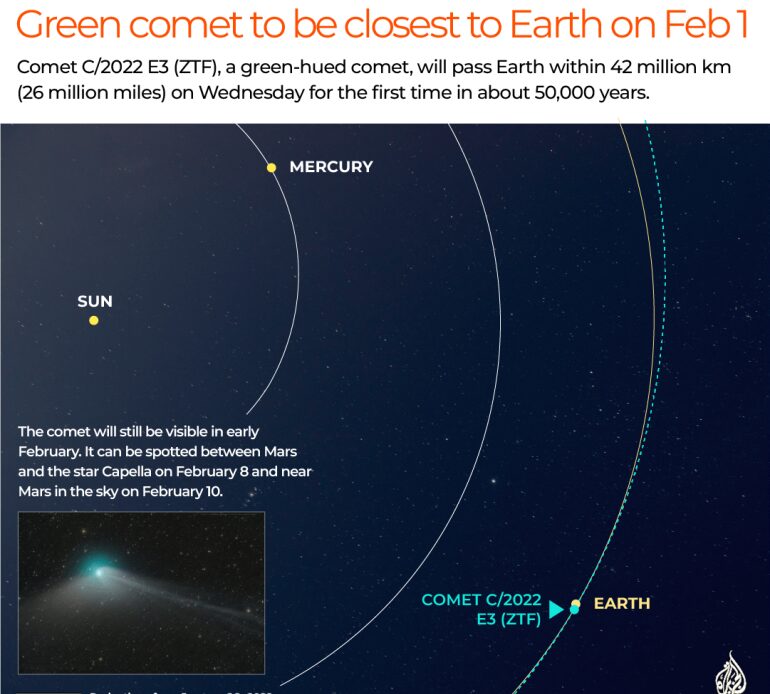Comet C/2022 E3 (ZTF) is visible with binoculars, telescopes and in some areas, the naked eye – and it will grow brighter.
A green-hued comet is expected to be the most visible to stargazers on Wednesday as it shoots past Earth and the sun for the first time in about 50,000 years.
Discovered less than a year ago, the dirty snowball last passed near Earth during Neanderthal times, according to NASA.
The cosmic visitor will swing by our planet within 42 million kilometres (26 million miles) Wednesday before speeding away again, unlikely to return for millions of years.
This harmless comet already is visible in a clear northern night sky with binoculars and small telescopes, and possibly the naked eye in the darkest corners of the Northern Hemisphere.
It’s expected to brighten as it draws closer and rises higher over the horizon through the end of January, and is best seen in the predawn hours. By February 10, it will be near Mars, a good landmark.
Stargazers in the Southern Hemisphere will have to wait until next month for a glimpse.
Finding a remote location to avoid light pollution in populated areas is key to catching a nice view of the comet as it journeys past our planet heading away from the sun and back toward the solar system’s outer reaches.
While plenty of comets have graced the sky over the past year, “this one seems probably a little bit bigger and therefore a little bit brighter and it’s coming a little bit closer to the Earth’s orbit,” said NASA’s comet-and asteroid-tracking expert, Paul Chodas.
Nicknamed “dirty snowballs” by astronomers, comets are balls of ice, dust and rocks and wander towards the inner solar system when they’re dislodged from various gravitational forces, becoming more visible as they venture closer to the heat given off by the sun.
Fewer than a dozen comets are discovered each year by observatories around the world.
The green comet was discovered on March 2, 2022 by astronomers using the Zwicky Transient Facility, a wide-field camera at Caltech’s Palomar Observatory in Palomar Mountain, California, the United States. That explains its official, cumbersome name: comet C/2022 E3 (ZTF).
Its greenish, emerald hue reflects the comet’s chemical composition – it is the result of a clash between sunlight and carbon-based molecules in the comet’s coma, the cloud around the nucleus that makes the comet appear fuzzy in the…

